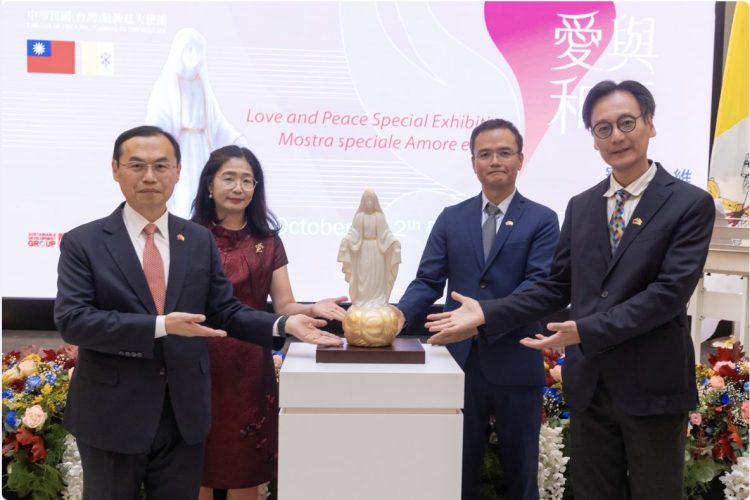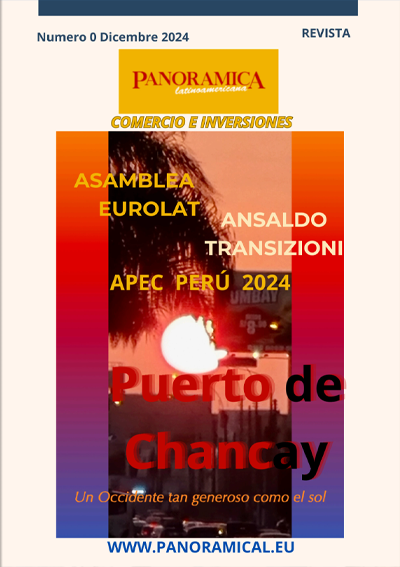2. A REGIONAL FUNDAMENTAL LABOUR RIGHTS FRAMEWORK
2.1. Decent Work as the Beacon of Mercosur Legislation
Both the original and revised Declaration have adopted a tripartite structure, which includes an axiological, a normative, and an enforcement dimension (24). The preamble to the Declaration constitutes the main foundation of the axiological dimension, which sets out that the regional bloc requires not only an economic dimension, but also a regional social sphere. The Declaration intends to ensure the protection of workers’ rights, which may be endangered by the integration of the Member States’ economies and the liberalization of their markets. Moreover, since Member States are founding members of the ILO and have ratified several ILO conventions, it is not a surprise that the Declaration embraces the 1998 ILO Declaration on Fundamental Principles and Rights at Work as one of the main guiding principles (25). The axiological dimension has been strengthened by the 2015 revision, which underlined the importance of the 1944 Philadelphia Declaration and has reasserted the importance of the ILO notion of ‘Decent Work’, which is enshrined in Article 2 of the 2015-Declaration.
The normative dimension of the Declaration consists of individual and collective labour rights, and public policy provisions. The individual labour rights dimension was reinforced by the 2015 revision, which strengthened the content protected in the 1998-Declaration, such as the principle of non-discrimination and equal opportunities (Article 4), equal treatment between men and women and disabled workers (Articles 5 and 6), equal treatment between migrant and frontier workers and national workers (Article 7), elimination of forced labour (Article 8), and elimination of child and adolescent labour (Article 9). Further, the 2015 revision introduced four provisions related to working time: a maximum workday of eight hours, the right to daily and weekly rest time, and the right to paid annual leave (Articles 11 to 13). It also adopted a provision related to the right to a minimum wage (Article 14) and the protection against unfair dismissal (Article 15). Moreover, relying upon ILO Conventions 155 and 167, the 2015-Declaration introduced an eleven-paragraph right to health and safety at work, which is essential in a post-pandemic world (Article 25).
Collective rights were reinforced, too. The 2015 revision substantially improved and emphasized the importance of freedom of association by imposing two duties upon Member States: a ‘negative duty’ whereby they cannot intervene in the creation and management of trade unions; and a ‘positive duty’ whereby Member States commit to ensure the right to create and freely manage trade unions as well as to recognize and respect the role of trade union representatives (Article 16). In addition, the 2015 revision imposed an obligation on Member States to promote the exercise of collective bargaining across different levels of the public sector (Article 17). Drawing upon ILO Convention 144 on Tripartite Consultation, social dialogue was recognised as a key element of industrial relations to bring together governments, employers, and workers to develop, implement, and promote international labour standards (Article 20). The only minor drawback of the 2015 revision was the regulation of the right to strike. Whilst the original Article 11 guaranteed the right to strike to ‘every’ worker, the current Article 18 set out that only ‘workers and trade unions’ can enjoy this right. Leaving out the term ‘every’ has the potential to weaken the position of professions such as the armed forces and the police, whose right to strike is usually contested (26).
As per ‘public policy’ provisions, the 2015 revision emphasized the importance of ‘employment’ to achieve sustainable development (Articles 21 and 22). Furthermore, the 2015-Declaration reiterated the need to have strong labour inspectorates to ensure the effectiveness of workers’ rights (Article 26), and the need to protect social security rights (Article 27).
The Declaration has gone from merely ‘copying’ the rights enshrined in ILO instruments and national constitutions to the adoption of substantive norms such as those related to child labour, working time, health and safety in the workplace. It has also strengthened the protection of freedom of association, and has reinforced the importance of social dialogue as a mechanism to develop labour policies. This reform has resulted in the development of a common regional framework that Member States must respect.
2.2. The Declaration as an Atypical Act
Mercosur is an intergovernmental organisation, which relies almost entirely upon Member States. Unsurprisingly, this institutional architecture has largely had an impact upon the effectiveness of Mercosur norms, and, more specifically, upon the legal nature of the Declaration. In the aftermath of the Declaration of Montevideo, trade unions urged Member States to adopt a regional social charter that would enshrine fundamental labour (27) . They argued for the adoption of a legally binding protocol of the TA that would oppose the implementation of national reforms that sought to make labour markets regulations more flexible (28). However, in 1998, the Argentine, Brazilian and Uruguayan companies’ representatives staunchly refused the adoption of the Declaration as a protocol. In the same vein, Member States’ governments expressed their reluctance to adopt a legally binding instrument and favoured the political declaration avenue. Their pressure took effect and the Common Market Group (‘CMG’) – the Mercosur executive branch – decided that the Declaration would not be a protocol and would not be subjected to the Mercosur dispute settlement system (29). Instead, the Declaration was adopted via a presidential declaration signed by all the four Member States’ Presidents.
The exclusion of the Declaration from the POP – which defines the sources of Mercosur law (Article 41) – would, in principle, mean that the Declaration is not a legally binding source of Mercosur law (30). Nevertheless, prestigious scholars, trade unions, and several national judges have considered that the Declaration legally binding (31). The most widespread approach argues that the Declaration is an international treaty because it recognizes fundamental rights that are already protected by the most important international human rights instruments, in particular ILO conventions, which, in turn, in some cases these instruments belong to the Member States’ constitutional rules (bloques de constitucionalidad) (32). Their jus cogens nature makes them directly applicable within the Mercosur and Member States’ legal orders. Therefore, the Declaration is a legally binding instrument that must be respected and if it were not complied with, that would engage Member States’ international responsibility (33) .
Notwithstanding the appeal of the international law argument, this article considers that it is necessary to analyse the legal nature of the Declaration from a Mercosur law perspective. It is worth noting that regional integration organizations do not have a numerum clausus sources of law. Although the Declaration was adopted via a presidential declaration, given its objectives, its content, and its impact upon regional and national legal orders, the Declaration is more than a ‘simple’ political declaration. It constitutes a legally binding atypical act.
The preamble of the Declaration states that Mercosur aims to achieve economic integration with social justice. To do so, it relies upon the 1998 ILO Declaration on Fundamental Principles and Rights and the fact that Member States have ratified several ILO conventions. This has been further strengthened by the 2015 revision, which reiterates that the Declaration, which is the backbone of the Mercosur labour dimension, aims to further develop a regional social dimension.
Furthermore, the content of the Declaration evidences that it is more than a simple political proclamation. As previously developed, this instrument enshrines a wide range of fundamental labour rights protected in human rights and international law instruments, which in many cases have been granted constitutional status in the Member States’ legal orders (34). The 2015 reform has incorporated a particular provision, which stipulates ‘[n] otwithstanding the previous subsection, all individuals and legal entities, in order to be part of the projects financed by MERCOSUR funds, shall comply with the content of the rights established in this Declaration’ (Article 31(4)). However minor, this constitutes another step forward in the strengthening of the Declaration.
Moreover, the concrete and tangible impact of the Declaration upon Mercosur and Member States’ legal orders makes an important case in favour of its legally binding nature. On the one hand, the Declaration has been the basis upon which the most important regional labour plans have been designed and adopted (35). On the other hand, the Declaration expressly states that Member States commit to respect the rights recognised therein (Article 28). Although the national executive and legislative powers have played a limited role in implementing the Declaration, national judges have extensively referred to it in their judgments to protect labour rights. Moreover, the recent recognition of the Declaration, in principle, as part of the general principles of Mercosur law by the Mercosur AdministrativeLabour Court36 confirms that it does constitute a legally binding atypical act.
Notes:
23 For further analysis, see: PUCHETA, Mauro. “The Mercosur Socio-Labour Declaration: The Development of a Common Regional Framework in the Global South”. International Journal of Comparative Labour Law and Industrial Relations. 2021, vol 37, n. 4, p. 325–354.
24 The enforcement dimension is explored in Section 3 and 4.
25 The Preamble also draws inspiration from the 1948 UN Universal Declaration of Human Rights, the 1966 International Covenant on Civil and Political Rights, the 1966 International Covenant on Economic, Social and Cultural Rights, the 1948 American Declaration of the Rights and Duties of Man, the 1947 Inter-American Charter of Social Guarantees, and the 1948 Charter of the Organization of the American States.
26 ARESE, César. Op.cit. p. 564.
27 BARBAGELATA, Héctor. “Consideraciones Finales”. En Instituto de Derecho del Trabajo y de la Seguridad Social de la Facultad de Derecho, Universidad de la República (Cinterfor/ OIT) (Ed). El Derecho Laboral del Mercosur Ampliado. Montevideo: Fundación de Cultura Universitaria, 2000, p. 630-652.
28 RIBEIRO DE SANT’ANA, Marcílio. “A declaração sociolaboral do MERCOSUL completa 10 anos: de hosanas a exéquias?”. Comunicação & Política. 2008, vol. 28, no. 3, p.193-214.
29 Mercosur/SGT-10/Act 1/98, 21 May 1998.
30 MANSUETI, Hugo. “Circulation of Workers in the Law of MERCOSUR”. En FRANCA FILHO, Marcílio Toscano et al. (Eds). The Law of MERCOSUR. Oxford: Hart Publishing, 2010, p.241- 258; CRISTALDO, Jorge Armonización normativa laboral del Mercosur. Una propuesta unificadora. Asunción: Editora Litocolor, 2000.
31 CASTELLO, Alejandro. Op.cit. p. 642; LIXINSKI, Lucas. «Human Rights in Mercosur”. En FRANCA FILHO, Marcílio Toscano et al. (Eds). The Law of MERCOSUR. Oxford: Hart Publishing, 2010, p.351-364.
32 Constitution of Argentina, Arts. 33 and 75 s. 22; Constitution of Brazil, Art. 5.2; Constitution of Paraguay, Art. 45; and, Constitution of Uruguay, Arts. 72 and 332. See: CASTELLO, Alejandro. Op.cit. p.642; PEÑA, Myriam. La declaración sociolaboral del Mercosur: su aplicabilidad directa por los tribunales paraguayos. Asunción: Instituto de Investigaciones Jurídicas, 2014; MALM GREEN, Lucas. Op.cit. p. 95; BARBAGELATA, Héctor. “El bloque de constitucionalidad de los derechos humanos laborales”. Revista de Derecho Laboral. 2004, vol. XLVII, no 214, p. 213-234; ERMIDA URIARTE, Oscar. La Dimensión Social del Mercosur 33. Montevideo; Fundación de Cultura Universitaria, 2004.
33 ARESE, César. Op.cit. p. 557.
34 See section 4.
35 For further analysis, see: PUCHETA, Mauro. Op.cit., p.325–354.








